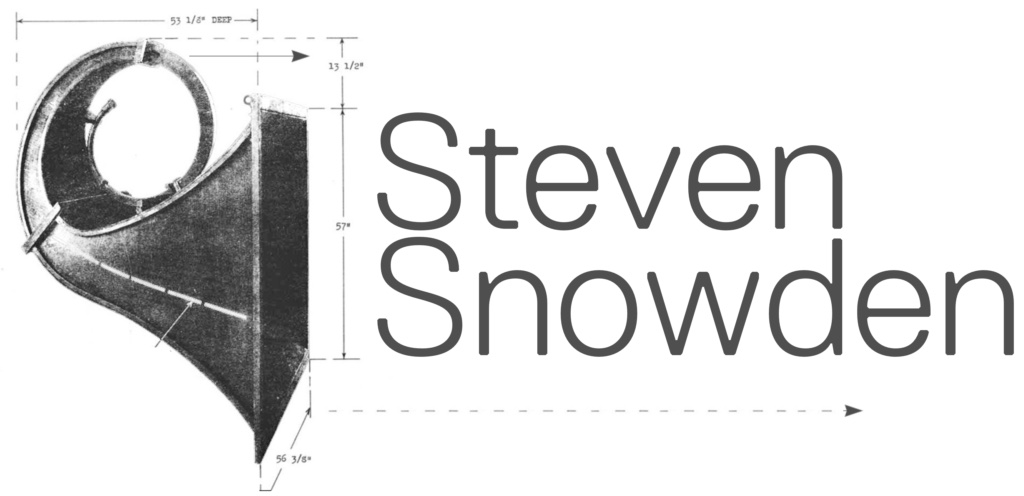A Point on a Slow Curve is inspired by the creation of visual artist Jay DeFeo‘s most celebrated painting, “The Rose.”Her sole focus from 1958 to 1966, The Rose bloomed into a one-ton monument, a marriage of sculpture and paint. After the artist’s eviction from her SF apartment, rendered DeFeo bereft and her painting homeless, The Rose was put in storage for 25 years, entombed and eventually forgotten. It was finally bought and restored by the Whitney Museum in 1995, six years after DeFeo’s death.
Additional performances include:
Niemand on January 31st
Corps Multiple on February 1st
R.Lee Dockery on February 2nd
Here’s what Dana has to say about this project:
A Point on a Slow Curve
Bay Area artist Jay DeFeo’s most well-known work started out as “an idea that had a center” but ended up a colossus, called The Rose. Her sole focus for eight years, The Rose (1958-1965) bloomed into a 12 x 8 foot, one foot thick mixed-media monument, weighing over a ton. Fully consumed with the formal questions posed by her painting, DeFeo shunned interested curators and buyers of her work until they gradually stopped calling.
It is a creation piece–the story of it in layers, piled on top of each other, earlier drafts of the work buried under hundreds of pounds of sculpted paint. She fed the Rose not only $5300 worth of paint and epoxy but barrettes, cigarettes, wire, beads and apparently a can of beans.
By 1965, she could no longer afford the $65 rent in her San Francisco apartment and was evicted. The Rose was forklifted out of her apartment and transported to the Pasadena Museum of Art, where it was briefly shown, but because of its unwieldy proportions and structural fragility, DeFeo was unable to find a permanent home for it. It was put into storage in the basement of the SF Art Institute, entombed and eventually forgotten, for 25 years.
None of this story makes sense in a career-driven, goal-oriented world, which is why I am so happily drawn to it! I feel a deep empathy with many aspects of DeFeo’s artistic and personal life–her years of disciplined, formal study coupled with a subjective, intuitive approach to her mediums; her additive-subtractive, constructive-destructive process of creating art; her bohemian lifestyle and decidedly anti-careerist decision-making. True, she might have combat her frustrations with quarts of brandy and a 2-pack-a-day habit, but she was passionately committed to her process and had a belief in the communicative power of art so strong that she let herself break down to her most vulnerable, for the sake of birthing a one-ton painting that some critics called “inappropriate”, due to its size and weight. Fat-shaming a piece of art!
In the past two years, I have visited the DeFeo Foundation several times in an effort to soak up as much information as I could about DeFeo’s life, her work and her process of making art. I have read her correspondences with Bruce Conner and watched videos of her lectures at Mills College, where she taught in the late 80’s. I have delved deep in an effort to understand how The Rose came to be. As for The Rose itself, there is much left to the imagination; it is impossible to view an image of it and expect to feel any of its power. The Whitney Museum owns The Rose and financed its restoration, but it is still rarely shown.
I wrote a short poem inspired by the physicality in which DeFeo sculpted the rays of The Rose. I followed it with another inspired a phrase she used to describe The Rose in the context of her life’s work: “A Point on a Slow Curve.” Eventually, I started sketching out a piece of music.
To use DeFeo’s own words, this piece has become “an opera situation”; a marriage of music and text as a personal response to an artist whose work transcends all categorization. The text is at times spoken, at times sung, and at times sculpted into fugue-like conversations; it is woven throughout the piece, which is now in eight parts and about 60 minutes long.
I have learned and continue to learn so much from my exploration of DeFeo’s life and of her work; she pushed boundaries, bucked trends, and above all, believed that art could embody the spiritual, the geological, the metaphysical and the feminine. Her story reaffirms my belief that music and art have the ability to inspire, transform and transcend. Some words to live by from Jay DeFeo: “Only by chancing the ridiculous can I hope for the sublime.”
A Point on a Slow Curve is being made possible by a grant from the American Composers Forum with funds provided by the Jerome Foundation
